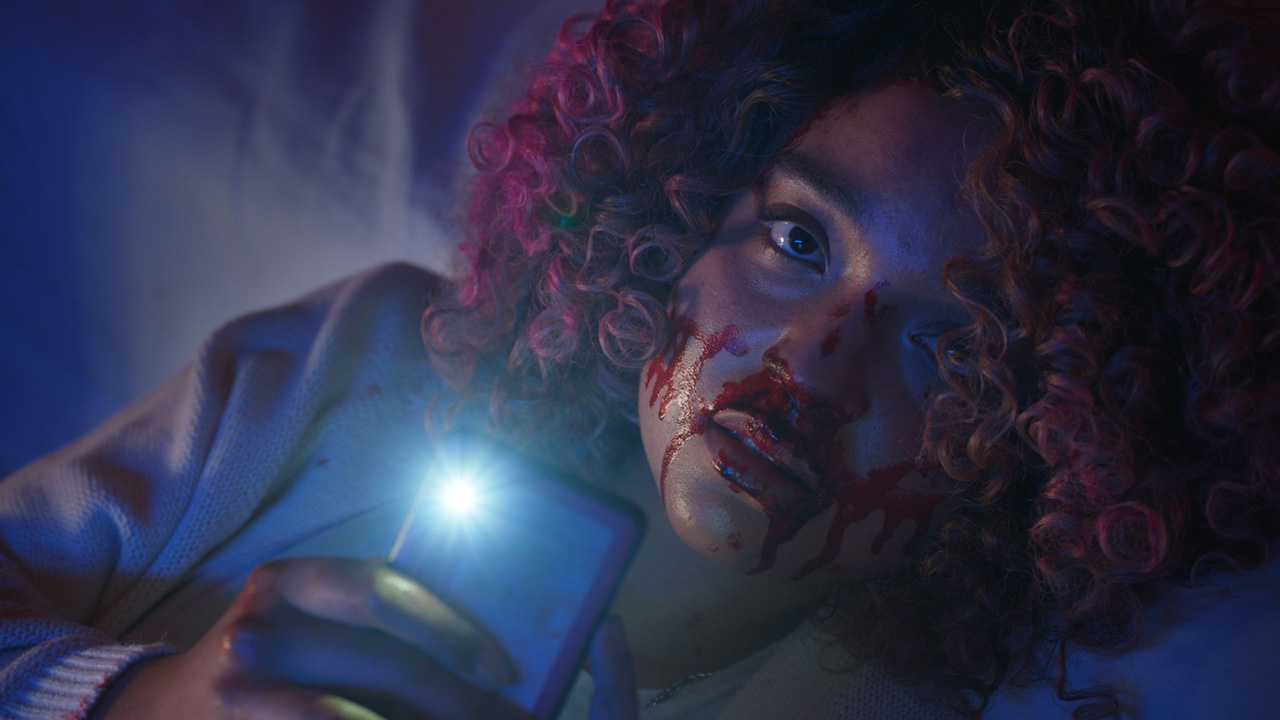Sissy, Carnifex and the latest Great Australian Horror Renaissance

2022 is proving a bloody solid year for Aussie horror cinema. Travis Johnson looks at how two new standouts demonstrate the health of the genre.
Are we in the middle of an Australian horror revival? It’s a label I hesitate to bandy around; horror never really goes away as a genre, but it does ebb and flow, and right now we seem to be at high tide in this here Great Southern Land.
In 2022 alone, looking at both wide release and the festival circuit, we’ve had the witchy arthouse darling You Won’t Be Alone, shark attack thriller The Reef: Stalked, low budget ghost story Apparitions, Ozploitation throwback Ribspreader, afterlife thriller Talk to Me, cryptozoological horror Carnifex, and social media slasher Sissy. That’s a pretty full slate for a genre frequently ghettoised by mainstream criticism.
But the thing is, horror is a broad church: it can encompass The Exorcist and The Evil Dead, Midsommar and An American Werewolf in London, and all points in between and beyond. Even a sub-category like Australian Horror is vast and contains multitudes, and it’s the last two films on the list that demonstrate this perfectly.
Directed by editor-turned-director Sean Lahiff, making his feature directing debut, Carnifex is a fairly classical monster movie in terms of structure. Heading off into the bush to record how well the local wildlife have recovered after bushfire season, a documentarian (Alexandra Park) and two environmental scientists (Sisi Stringer and Harry Greenwood) find themselves being stalked by a creature that should not exist: thylacoleo carnifex, more commonly known as the marsupial lion.
An arboreal predator long thought extinct, the beast is maaaaaybe the inspiration for the drop bear legend. More germane to our trio of protagonists, however, is the fact that the creature has been forced out of its remote hunting ground by the fires, and prey is thin on the ground. As you might expect, carnage ensues.
Then there’s Sissy, from co-writers and directors Hannah Barlow and Kane Senes. Tonally and thematically similar to this year’s Bodies Bodies Bodies, Sissy sees wellness influencer Cecelia (a wonderful Aisha Dee) unexpectedly reconnect with her childhood friend Emma (Hannah Barlow) and get invited to the latter’s hen’s weekend at a remote rural property. Also attending is Alex (Emily De Margheriti), Cecelia’s childhood bully with whom she had a spectacular row back in the day that saw her exiled from her social group. As the weekend proceeds, Cecelia—known as Sissy as a kid—finds her carefully constructed influencer persona under attack, and without spoiling what is a delightfully sly satirical slasher, the corpses soon begin to pile up.
An environmental monster movie and an internet-culture slasher flick—the two seem poles apart. One is an old-school creature feature built around an incredibly realised killer critter, while the other is an up-to-the-minute swipe at influencers, wellness, bullying, toxic positivity, and all manner of social media-derived ills. Yet there are common elements worth talking about, apart from the obvious one: they’re both pretty great.
They’re also both set outside of the cities where the majority of Australians live, tapping into the primal fear that Australians (well, urban, settler Australians) have of the bush—that remote fastness where help is a long way off if anything goes wrong. The vast majority of Australian horror films deal with this—think Wolf Creek, Razorback, Long Weekend, Roadgames—to the point where urban horror is the exception here rather than the rule.
But what’s most intriguing is how both films deal with modern anxieties through a genre lens, something that horror has always excelled at. We’re not breaking new ground to say that “low” art can deal with themes that “high” art might balk at, but it’s worth noting that a heavy theme is often better communicated via a blood-soaked thriller than a heavy-handed polemic (see: Don’t Look Up).
Carnifex, for all its bodily mutilation, makes no bones about the cause of the carnage: bushfires driven by climate change has forced the titular terror to go looking for easier meat. Sissy, for its part, deals with a wider spread of themes and ideas, but they essentially boil down to how performative life has become in the social media age, and how traumatic it can be when the disparity between our performed selves and our real lives is revealed—traumatic enough to kill for.
That’s the sort of thing (well, that and the blood) that keeps me coming back to horror: the way this gory little genre can pith our collective psychological viscera and make us consider issues we might otherwise ignore. The current crop of local productions is certainly evidence of that. For a genre predicated on a preponderence of dead bodies, Australian horror is surprisingly healthy.
















